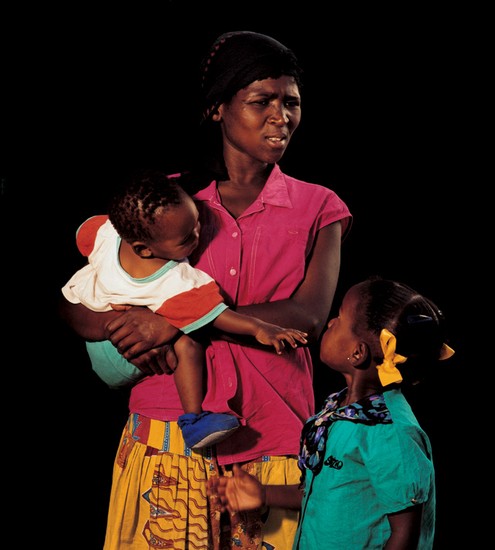Free Ground
 |
| Philla Vusani with Children, Beaches [7/20] [Trevor Appleson] |
The person awaiting my arrival was the artist, Trevor Appleson . I knew him immediately as I entered the restaurant as the guy with pissed off written all over his face. He had, after all, travelled all the way across the city to meet me on my turf. To his credit and my shame, he turned out to be a true gent and forgave me the instant I blurted my apologies. He then invited me to write a short story for his book, Free Ground , a showcase of two of his South African projects; Beaches and Uniforms. He felt that the book would be improved by the addition of a short story by a South African writer. He’d read Gem Squash Tokoloshe and wanted me to write the story. Me! I was flattered but still a bit high on my Whitbread shortlisting so I could see how an artist would want to work with someone like me. Then he slid a folder containing ten small prints of his work across the table.
Unsmiling faces stared at me from glossy black depths. The inky background delineated form and colour with such clarity each of his subjects looked poised to step from the page, yet their stance had a formality that made me think of 17th century Dutch portraiture, the quality of the light as spiritual as Rembrandt’s, as if those people; dockworkers, gangsters, drug addicts, flower sellers, bakers, beach babes; were lit from within.
Hesitantly, I asked Trevor why he thought his work needed to be referenced by a short story and pointed out that, like all brilliant art, it should tell its own story. He never really gave me an answer, but I think he was still unsure of his talent and afflicted with the self doubt many artists, myself included, suffer from. Or perhaps that’s a false presumption on my part and he simply envisioned the book as some sort of collaborative project.
Five years on I still treasure the ten prints he gave me. They inspired this month’s short, Blur . I wrote Blur even though I knew he would never use it, I wrote it because I have ten prints that inspire, but mostly, I wrote it because he asked me, and I was honoured.